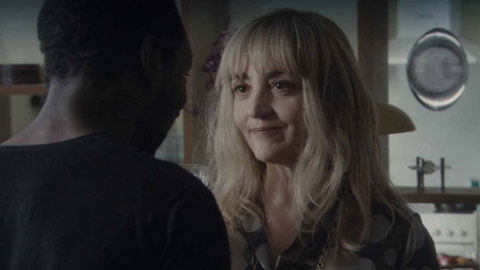Rembrandt’s J’Accuse (Peter Greenaway)
The last Greenaway film I saw was Prospero’s Books, so I have no idea if Rembrandt’s J’Accuse is a return to form, as programmer Rod Armstrong claimed when he introduced it at SFIFF. A companion to Greenaway’s recent Rembrandt biopic, Nightwatching (2007), Rembrandt’s J’Accuse is an art history lecture disguised as an essay film. In his meticulous dissection of Rembrandt’s “The Night Watch,” Greenaway alludes to the painter’s biography, to the political life of 17th century Amsterdam, to the aesthetic tastes of the day, to romantic intrigues, to the history of technology, and to various schools of relevant academic criticism, but the film seems less intent on uncovering the mysteries of a great painting than on modeling for a contemporary audience the fine and fading art of looking. Really looking.
Though drowning in a whirl of images, we are sorely lacking in visual literacy, the film implies. Or, that’s certainly what I found most interesting about it, at least. Formally, Rembrandt’s J’Accuse is an odd bird. Each of Greenaway’s arguments is presented logically and in sequence (such is the burden of a linear medium), but it has something of the quality of a Flash presentation or a late-’90s CD-Rom. I can imagine it being spliced into hyperlinked elements and finding a home as an interactive museum kiosk. (I almost certainly would have preferred to explore it that way.) Greenaway’s talking head even appears throughout the film like a pop-up window, reading from the script in a resounding, pedantic tone that rivals Terrence Davies’s.
The Other One (Patrick Mario Bernard and Pierre Trividic)
My expectations for The Other One skyrocketed during the opening title sequence, which is a beautiful montage of high-angle, nighttime shots of a mostly-empty, twelve-lane highway. It reminded me of a Claire Denis film — the helicopter ride that opens I Can’t Sleep or the rooftops of Paris in Friday Night. The wide highway leads eventually to a toll station. Then, as I recall, Bernard and Tridivic cut to their heroine, Anne-Marie (Dominique Blanc), who proceeds to drive a hammer into the side of her skull. Anne-Marie, we learn, has recently ended her relationship with a much younger man, freeing him to meet someone more appropriate. When she later learns that his new partner is also d’un certain age, she comes unhinged. She fails, embarrassingly, to seduce him, she cyberstalks, she begins to hallucinate.
With The Other One, Bernard and Tridivic are positioning themselves somewhere in that line from Sirk to Cassavetes to Almodovar, all of them male directors preoccupied by strong women of fading beauty and sexual power. Blanc’s performance is impressive, and the style of the film is often suitably claustrophobic and disorienting, but something has gone awry in the structuring of this film. That cut from the toll station to Anne-Marie’s bathroom is the first of countless ellipses, most of them chronological jumps, both forward and backward in time. It’s not confusing — I never struggled to understand what was happening, or when — but the cutting creates a flatness or stasis in the main character, a woman who is presumably becoming transformed through a moment of crisis. Particularly during the last half hour, as my patience waned, I thought often of Fien Troch’s disappointing recent film, Unspoken, which also seems to assume that fixing a camera long enough on an actress will necessarily reveal the complexity of her character (exactly the wrong lesson to be learned from the best practitioners of contemplative cinema). Sirk, Cassavetes, and Almodovar (at his best) empathize with, are curious about, and have an essential understanding of their heroines. I don’t doubt Bernard and Tridivic’s commitment to Anne-Marie but the film lacks a trustworthy guide behind the camera.

